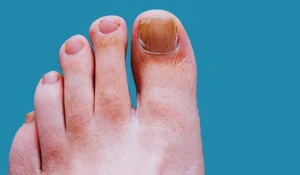Foot reflexology is a holistic healing practice that uses acupressure on the feet to promote various health benefits. According to this alternative healing approach, there are reflex points on the feet, hands, and ears that correspond to specific organs and other parts of the body. For centuries people of ancient China and Egypt used the method to treat various ailments.
This article will explore all the aspects of foot reflexology including the foot reflexology chart, its pressure points, benefits, side effects, and the working mechanism. Keep reading to find more information regarding the foot reflexology chart.
What Is Foot Reflexology? Origin
Foot reflexology is a type of massage therapy that offers relaxation and calmness. The treatment has been around for centuries. It is quite unable to trace the origin of the treatment, however, based on the ancient texts and scriptures Egypt and China are considered the origin places of reflexology.

It makes use of a foot reflexology chart to put acupressure on particular areas of the foot. These points correspond to different areas in the body. It is believed that this treatment method can improve the quality of life.
Top 4 Benefits Of Foot Reflexology
The treatment massages the meridian points on the feet based on a reflexology chart. The massaging technique can stimulate the corresponding organs in your body. Some of the health benefits of the method include:
1. Stress Relief
The chief benefits of reflexology are relaxation and stress reduction. Since the therapy can improve the blood flow throughout the body. It can result in the minimization of stress and anxiety. It also helps the body to return to its natural relaxed state as well.
2. Reduce Pain
Massage based on a foot reflexology chart can reduce chronic and acute pain. It can reduce pain felt after surgery especially surgeries like kidney transplants or abdominal hysterectomy. In children, it can effectively alleviate chronic inflammation.
3. Improved digestion
The reflex point found on the foot chart is linked to the stomach. Offering massage to the point on the foot that corresponds to the stomach will promote improved digestion and increased metabolism. It can facilitate overall stomach wellness as well.
4. Sleep Improvement
Since the method can offer extreme relaxation and reduced stress, it can directly impact your sleep pattern. Increased circulation and enhanced calmness will have profound effects on your sleeping patterns.
This holistic treatment approach promotes various other advantages as well. The benefits of reflexology are a matter of ongoing research. Existing evidence on the topic is limited, although they are highly promising.
What Is A Foot Reflexology Map?
A foot reflexology chart or reflexology map is a foot cart that divides each foot into different regions. Based on these divisions, each point in the foot indicates its relationship with the larger organ or gland in the human body.
The labeling of female foot reflexology charts and other charts in general will slightly vary depending on various factors. However, they all rely on the same principle. According to foot reflexology, the key relaxing points of the foot include,
- Toes – The relaxed points on the toes are related to the head and neck.
- Arch of the foot – The internal organs such as the stomach, liver, and kidneys are related to the foot arch.
- Ball of the foot – The chest and heart are the primary organs that correspond to the ball of the foot.
- Heel – The heel is associated with the lower back and pelvis.
- The outer edge of the foot – The pressure points on the outer edge of the foot are associated with the spine and sciatic nerve.
When pressure is applied to these key points, it can stimulate the associated organs or glands. This way foot reflexology promotes healing and relaxation. It is a beneficial method for sustaining the balance of the body. It is used as a complementary therapy to improve overall wellness.
Side Effects Of Foot Reflexology
You have to resort to massage therapy in moderation to avoid common side effects. There are a few drawbacks associated with the treatment. The following are some of the side effects of reflexology.
- Lethargy
- Nausea
- Dizziness
- Lightheadedness
Some of the individuals may not experience any kind of side effects after the treatment. If you find any of these side effects getting worse seek professional help.
Conclusion
Foot reflexology is a method that can help to offer relaxation and stress reduction. It can also support various health functions such as digestion, blood circulation, pain relief, and sleep improvement. The principle of foot reflexology remains the same but the foot chart can slightly vary based on various factors. If you are looking for an alternative holistic approach to achieve overall wellness.
Foot reflexology is a traditional alternative method. However, you can not substitute this method for any other treatment. If you take any medications or have any underlying conditions consult your doctor before starting foot reflexology.







